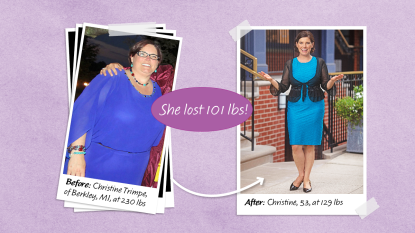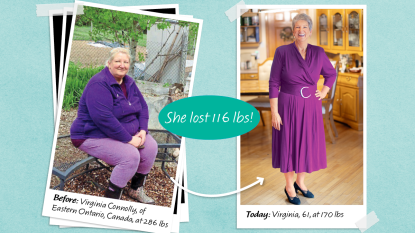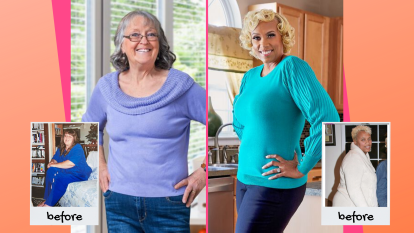Harvard-Trained MD’s Easy Tips to Heal Your Liver & Lose Weight Fast
Peggy Herrick lost 135 pounds with the help of eating these healing plant foods
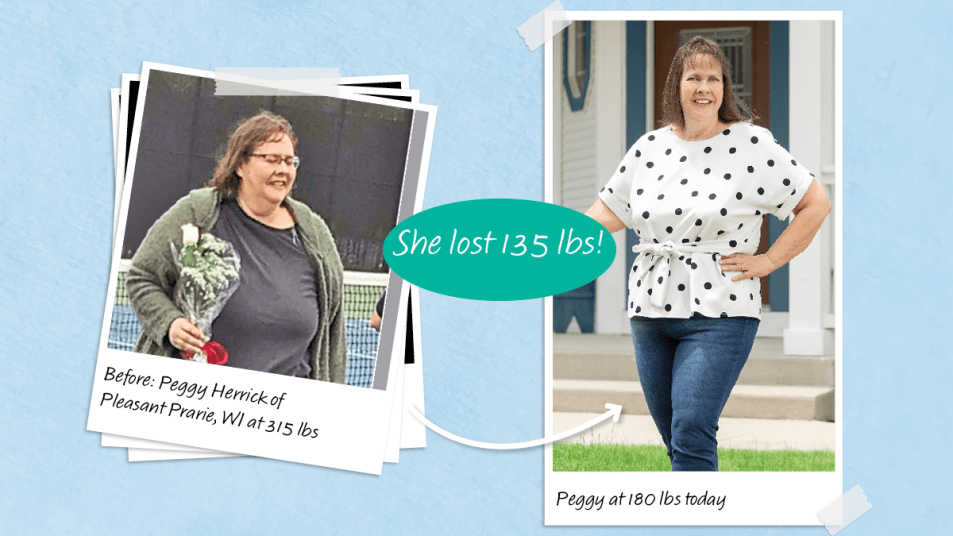
Whether venting to friends over brunch or to a doctor during a checkup, many of us reach a breaking point where we toss up our hands and ask: “How am I gaining more weight than ever when I haven’t changed anything about my health routine?” The answer often lies in changes that happen in our 40s and 50s to our body’s largest metabolism-influencing organ: the liver.
Luckily, this problem has an easy solution: eating more liver-detoxing foods can improve the organ’s function and jumpstart metabolism so we can lose stubborn weight, says Harvard-trained internist Amy Shah, MD, author of I’m So Effing Hungry.
Why is the liver important to health and weight loss?
The liver doesn’t get the attention that the brain or the heart might garner, but it’s still vitally important to our overall health. It’s a master multitasker, responsible for hundreds of jobs, including cleansing our blood, metabolizing medications, processing dietary fat and removing toxins from our system. “The liver is a security gate, filtering toxins. But when it’s overwhelmed by fat, it can’t catch them all, so they accumulate,” says dietitian Kristin Kirkpatrick, MS, RN, author of Skinny Liver.
Aging affects liver function and drives weight gain
A healthy, youthful liver can burn fat and toxins and flush them out of our system with no problem. But that function seems to slow around menopause. Why? Experts believe that estrogen protects the liver, allowing for optimal function.
“But as estrogen levels go down with menopause, there is less blood flow to the liver, our liver ages faster and we see more scarring and dysfunction,”asserts Dr. Shah. Fanning the problem in this modern age is the fact that the liver now has to filter more things than ever before, from synthetic chemicals to environmental toxins. (Click through to see how one woman conquered this hormone flux with probiotics.)
So it’s no surprise that 80% of women over 40 have an underperforming liver, says Dr. Shah. She adds, “We see a tremendous increase in a condition called nonalcoholic fatty liver disease [NAFLD] in menopausal women.” Fatty liver has no symptoms, but its damage doesn’t stay hidden. “When our liver is taxed, we store more fat, especially around the midsection.” Read more about how fatty liver disease is affecting an increasing number of women over age 50.
Eating liver-detoxing “glu-foods” can help
Luckily, it’s possible to heal a fat-clogged liver, especially in its early stages. “We often think of treating the liver with drugs. But there is definitely a way to detox it naturally using food,” says Dr. Shah. Her solution centers around eating vegetables that contain sulfur compounds called glucosinolates present in easy-to-find grocery store foods like broccoli, turnips and kale. The name might sound clunky, but glucosinolate compounds may be the most powerful diet tool you’ve never heard of!
How glu-foods heal the liver
When we eat glucosinolates, or glu-foods, they set off an enzyme reaction that turns fat-soluble compounds trapped in the liver into water-soluble compounds. Why does that matter? We literally pee away water-soluble compounds! “There’s no better way to detox the body. Glucosinolates work like a sponge, mopping up fat, toxins and synthetic estrogens,” says Dr. Shah. “They work like medicine, making weight loss effortless.”
“Foods with these compounds are worth their weight in gold,” says bestselling author Joel Fuhrman, MD. He adds that when liver function improves, fatigue and fatigue-induced overeating vanish. “Glucosinolates are likely the most powerful life span-enhancing substances in nature.”
In addition to liver cleansing and weight loss, glucosinolates also work on cells to snuff out inflammation that triggers pain, poor immunity and illness. Dr. Fuhrman affirms, “Their role is not limited to the liver; they benefit every cell in the body.” Glu-foods also function like antibiotics to ward off infections. Dr. Shah adds, “They’re also really good at protecting us from cancer.”
How glu-foods quiet hunger
Speaking of cravings: Dr. Shah compares the effects of glucosinolates to the prescription weight-loss drug Ozempic. (Click through to learn more about Ozempic for women over 50.) The reason: Veggies rich in these compounds are proven to activate bitter taste receptors in the gut, which stimulate a group of compounds called GLP-1 hormones — the same ones prescription weight-loss drugs like Ozempic target to slash hunger and speed slimming. Plus, the veggies’ natural fiber slows stomach-emptying, another thing Ozempic is known to do to support slimming. Dr. Shah says, “If you eat these vegetables with two meals a day, you’ll change your body in ways you’d never imagine.” She adds, “Eat these foods and watch your body shed weight, change your gut and improve your mood!”
The results are inspiring!
Dr. Shah sees women shed 12 pounds in two weeks following her nutrition advice. As further proof of the transformative power of plants, just look to Georgia Noble, 58, who lost 11 pounds in a week eating more veggies and went on to heal her fatty liver disease. And then there’s Anita Faye Wilson, 55, author of The W.O.W. Effect. She dropped 28 pounds in 21 days doing a detox that included plenty of healthy veggies.
Ready to try this liver-detoxing approach for yourself?
To get a taste of these health benefits, try Dr. Shah’s two-week plan, created exclusively for First for Women readers. On it you’ll start your day with a protein-rich breakfast like eggs or yogurt (protein-rich coffee, or proffee, is another option). For lunch and dinner, add glucosinolate-rich foods like mildly bitter or cruciferous veggies to your meals. Good choices include arugula, bok choy, broccoli, Brussels sprouts, cabbage, cauliflower, collard greens, horseradish, kale, mustard greens, radishes, rutabaga, turnips and watercress. “No diet pills needed,” Dr. Shah says. “This is stronger than any weight-loss injection.” She adds, “You’ll notice changes in your body’s hunger clock, and your liver health will improve in as little as two weeks.”
And since these ‘glu-foods’ have a synergistic effect, the benefits get stronger the more you eat, says Dr. Shah. To double your superfood doses, dip raw veggie into artichoke dip, hummus or guacamole, or blend extra veggies into soups or sauces. There isn’t a set number of servings to aim for, but scientists have identified around 150 different glucosinolates so the options are endless! Plus, glucosinolate-rich foods amplify one another, so variety is key. “The more of them you eat, the greater protection you get,” explains Dr. Fuhrman, author of Eat for Life.
To speed results even more, try these bonus tips…
Chew your food
Thoroughly chewing glu-veggies (or chopping or blending them) allows enzymes in the cell walls of the foods to reactive with glucosinolates. Dr. Furhman explains, “The better you chew your vegetables, the more beneficial nutrients will be formed.” One note: Glucosinolates’ healing powers get deactivated by intense heat so these veggies are best enjoyed raw or lightly steamed.
Stock up on the Super 6
Glucosinolates top the list of Dr. Shah’s “Super 6” nutrients to target for weight loss. But make sure to reach for the other five:
Protein. Protein-rich foods contain “appetite-suppressing amino acids” from meat, nuts and beans, says Dr. Shah. (Click through to see how to lose weight with protein-rich coffee, or proffee.)
Polyphenol-rich fruits and spices, like berries or oregano.
Dopamine-supporting foods. Mood-boosting dark chocolate and blueberries fall in this delicious category.
Fiber. Try apples and avocado.
Omega-3s, from fresh-caught salmon. Click here to learn how to boost your omega-3 levels if you don’t like fish.
Close the kitchen early
Stop eating 2 to 3 hours before bedtime. “That’s the biggest needle-mover for women,” says Dr. Shah. This “circadian fasting” resets our body clock, improving sleep and digestion. Click through to find more ways to practice intermittent fasting for weight loss.
After 2 weeks on the plan, you’ll feel so good that you’ll keep enjoying liver-helping veggies as you continue to improve your health!
How liver-detoxing foods helped Peggy Herrick lose 135 lbs
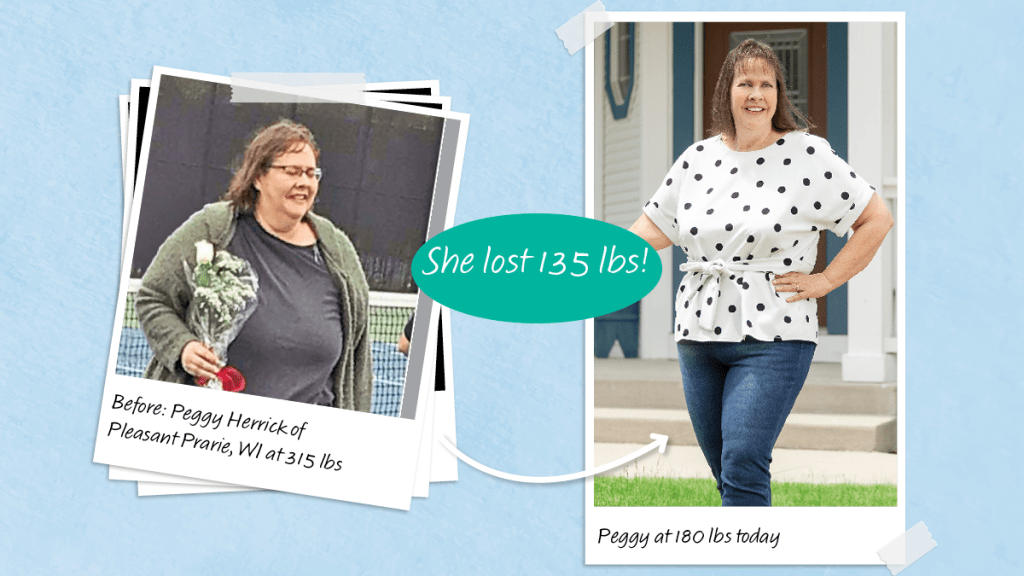
Most people are joyful around holidays, but Peggy Herrick, 57, of Pleasant Prairie, WI, had so much back pain she couldn’t stand at gatherings. Years of failed dieting, three pregnancies and chronic inflammation will do that to you, she thought as she found an open seat next to her sister, Sara. “Peggy, I heard cutting back on gluten may help with your pain and inflammation,” Sara said. And Peggy had to admit, I’m willing to try anything…
So Peggy gave up on a lifetime of eating low-fat and low-calorie and just tried to eat nourishing, non-inflammatory foods. Within two weeks of eating more vegetables, Peggy felt better than she had in years. Her belly bloat vanished and her pant size dropped. I’m already down 10 pounds in one month!
Peggy kept eating clean meals and discovered, “I loved to sauté a mix of cabbage, carrots and broccoli or spinach with butter and serve with chicken or shrimp.”
In less than 2 years Peggy lost 135 pounds! She also watched as her “good” cholesterol improved from 45 to 68 and she dropped her triglycerides from 125 to 39. “My inflammation and pain are gone.”
By eating this way, and without dieting, Peggy has been able to maintain her weight for 18 months. In fact, a body-scan test revealed she lost 12 more pounds of pure fat and gained 12 pounds of lean muscle, without the number on the scale changing. “ I feel more confident than ever. I’m excited to participate in life!”
To learn more, check out Dr. Amy Shah’s latest book, I’m So Effing Hungry.
This content is not a substitute for professional medical advice or diagnosis. Always consult your physician before pursuing any treatment plan.
A version of this article originally appeared in our print magazine, First for Women.
Lisa Maxbauer is an award-winning health and nutrition writer atFirst for Women and Woman’s World magazines. She is a former guest blogger with The New York Times and author of the award-winning independent children’s book Squash Boom Beet. Learn more at SquashBoomBeet.com and follow on Instagram @lisamaxbauer.
Taylor Patton is a Milwaukee-based writer, editor and professional storyteller. Published in ‘Milwaukee Magazine,’ ‘Edible Milwaukee,’ ‘Woman’s World’ and ‘First for Women,’ she loves finding everyday stories that are just begging to be told. As a certified RYT-200 yoga teacher and vegetarian for 15 years, she believes everyone can eat, drink and live a little more green.






